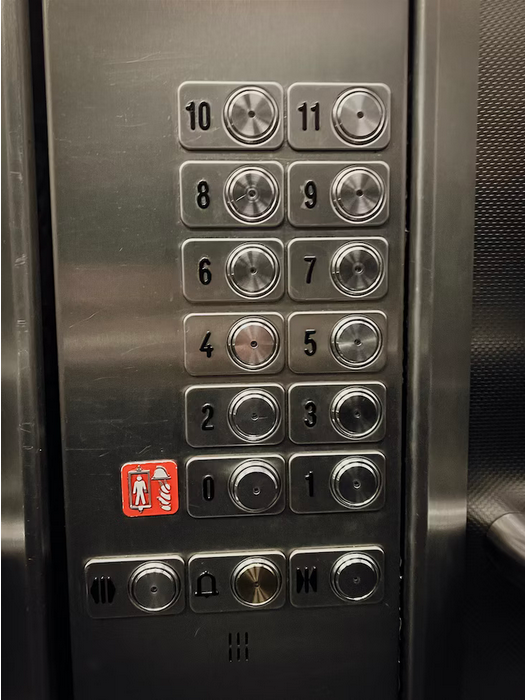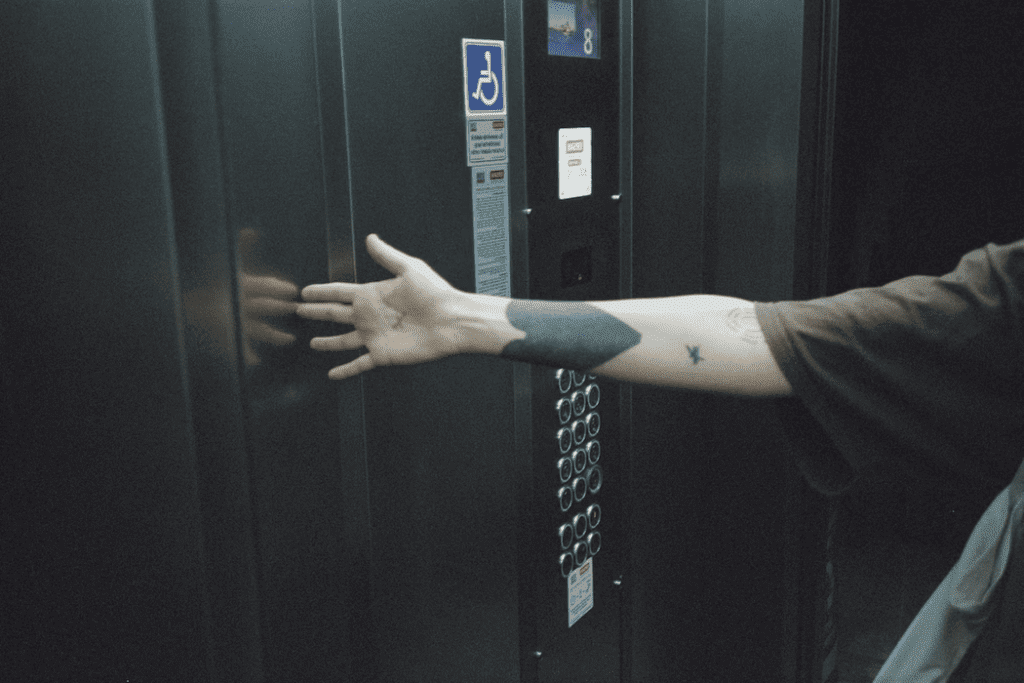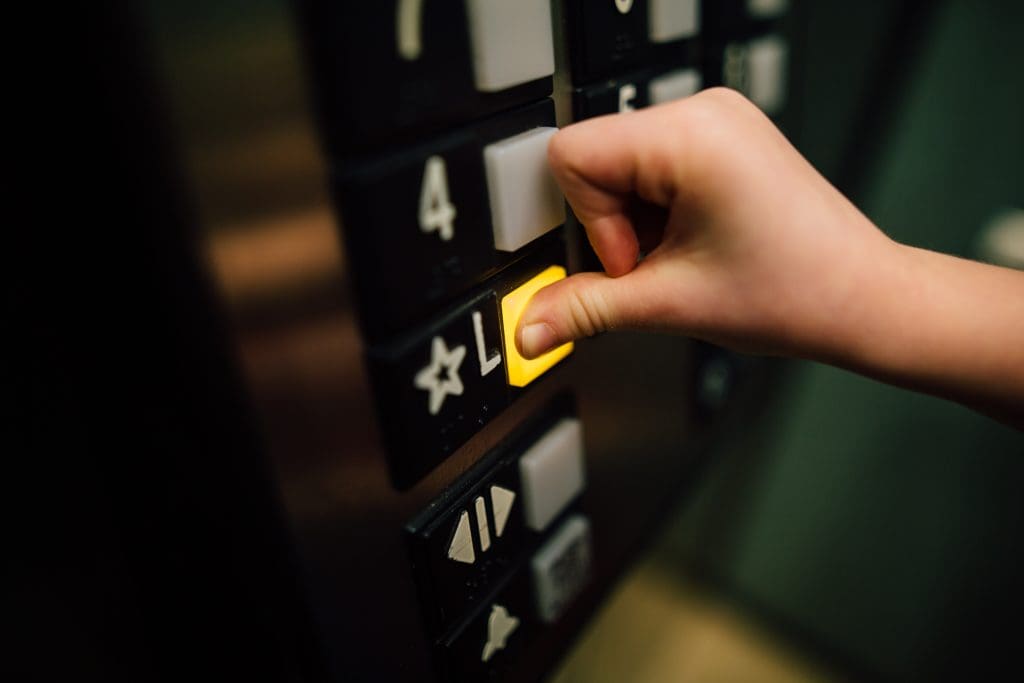Elevator and escalator accidents are preventable incidents that can cause serious injury or death. It is important to understand what causes these accidents and how to prevent them in order to keep people safe.
This section will discuss the causes of elevator and escalator accidents, how to prevent them, what to do in the event of an accident, who is responsible for the accident, legal options for victims and their families, and how to help keep people safe from elevator and escalator accidents.
Causes of Elevator and Escalator Accidents
The causes of elevator and escalator accidents can be broadly divided into three main categories: mechanical malfunctions, operator error, and insufficient maintenance.
Mechanical malfunctions can be caused by a variety of factors, such as improper installation, faulty wiring, and worn components.
Operator error can occur due to lack of training, inadequate supervision, and failure to follow safety protocols.
Insufficient maintenance can lead to dangerous conditions, such as blocked emergency exits, worn brakes, and loose parts.
Mechanical Malfunctions
Faulty mechanisms have caused a substantial number of unfortunate incidents, resulting in grievous consequences. Common mechanical malfunctions that can lead to elevator and escalator accidents include:
- Elevators:
Door faults: Malfunctioning doors can be a major cause of elevator accidents, as they may open or close unexpectedly, trapping people inside or between the doors.
Speed faults: The speed of the elevator can be affected by a number of malfunctions, causing it to either move too fast or too slow, leading to sudden jerks and/or stops, resulting in accidents.
- Escalators:
Step faults: Uneven steps can cause people to trip and fall, resulting in serious injury.
Spacing faults: When the gap between the steps is too wide, it can become difficult to climb onto the next step, leading to falls and other accidents.
Overall, mechanical malfunctions can lead to serious accidents and injury, and should be immediately attended to and fixed. It is essential to ensure that all safety precautions and maintenance protocols are followed, in order to ensure the safety of all elevator and escalator users.
Operator Error
Operator error can be a significant contributor to the occurrence of hazardous incidents, especially when safety protocols and regulations are not followed. Such errors include, but are not limited to, failure to inspect an elevator or escalator prior to use, misuse of an elevator or escalator, or failure to properly secure or supervise a lift. Operator errors can also occur due to lack of appropriate training or knowledge of safety protocols.
For example, an operator may not be aware of the hazards of overloading an elevator or the proper procedures to take in the event of a power failure.
In addition to operator errors, improper maintenance of elevators and escalators can also contribute to hazardous incidents. It is important for operators to be aware of the necessary steps for ensuring the safety of their equipment, such as regularly inspecting, cleaning, and maintaining the lift. Operators should also be aware of the warning signs that can indicate an impending malfunction, such as strange noises or vibrations, and take steps to address any issues before an incident occurs.
Insufficient Maintenance
Unsatisfactory maintenance of lifts and escalators can contribute to serious incidents, with potentially catastrophic consequences. An essential part of lift and escalator maintenance is to ensure that the system is regularly inspected, maintained, and regulated in accordance with the manufacturer’s guidelines. If these procedures are not followed correctly, the lift or escalator may become unsafe and lead to an accident.
In some cases, the company responsible for the lift or escalator may not be able to carry out the necessary maintenance tasks, due to lack of resources or inadequate personnel. This is often the case with older systems that are not subject to the same safety standards as newer models.
In addition, if the lift or escalator is not regularly serviced, this can increase the chances of a malfunction, and any problems that arise may go unnoticed until it is too late. Furthermore, negligence in following the maintenance guidelines can also lead to serious accidents.
Preventing Elevator and Escalator Accidents
Regular Inspections and Maintenance is an important part of preventing elevator and escalator accidents. A comprehensive maintenance program should be in place to ensure that all elevators and escalators are always in safe working order. By ensuring that all components are working correctly and all safety features are operational, the risk of accidents can be reduced significantly.
Proper Training for Operators is necessary to ensure that they are aware of all safety procedures and protocols. Operators should be trained in all aspects of the equipment and be knowledgeable about the maintenance and safety issues associated with them. It is also important to ensure that operators are aware of the safety regulations and that they are adhering to them.
Adhering to Safety Regulations is essential for preventing elevator and escalator accidents. All operators and maintenance personnel should be trained in the safety regulations and be required to adhere to them at all times. Companies should also ensure that all safety features are regularly tested and maintained to ensure that they are in working order and that the elevators and escalators are operating safely.

Regular Inspections and Maintenance
The importance of frequent, diligent inspections and maintenance of mechanical systems cannot be overstated in order to prevent potentially serious incidents. Regular inspections and maintenance of elevators and escalators can help identify potential problems that could lead to an accident.
Inspections of elevators and escalators should be conducted at least once a year by a certified technician. During the inspection, the technician should check for the proper operation of the machine, the condition of the cables, and any other visible signs of wear or damage. Any issues that are discovered should be addressed immediately.
In addition to annual inspections, it is important to conduct regular maintenance in order to ensure that the system is functioning properly. This includes checking for worn parts and replacing them, cleaning the system, and lubricating moving parts. Regular maintenance can help to prevent wear and tear on the system, as well as ensure that any potential problems are identified and addressed quickly.
It is also important to keep records of all inspections and maintenance, as this can help to identify any recurring issues that may need to be addressed.
Proper Training for Operators
In order to ensure the safety of those using elevators and escalators, it is essential that operators have proper training. In addition to regular inspections and maintenance, proper training of operators can help reduce the risk of elevator and escalator accidents.
Training should include instruction on safe operating procedures, basic maintenance, and emergency response protocols. Operators should also be trained to recognize potential hazards and to take appropriate corrective action.
Operator training should include instruction in proper operating techniques, such as using the brakes correctly and using the proper speed when starting and stopping the elevator or escalator. In addition, operators should receive instruction in the proper use of safety devices, such as safety shoes and brakes, as well as how to detect potential problems and how to respond to them.
Operators should also receive instruction in the proper use of handrails and other safety features, such as emergency stop buttons, and how to operate the elevator or escalator in the event of a power failure. Finally, operators should be trained in identifying and responding to potential hazards and how to report them to their supervisor.
By ensuring that elevator and escalator operators are properly trained, the risk of accidents can be significantly reduced. Proper training of operators can help ensure that the equipment is operated correctly and safely, and can help reduce the chances of an accident or malfunction occurring.
Adhering to Safety Regulations
Strict adherence to safety regulations is essential for the safe and proper operation of transportation equipment.
It is important that operators of elevator and escalator systems are familiar with the applicable safety regulations and standards and follow them to ensure the safe operation of these devices.
Safety regulations are designed to minimize the risk of accidents and injuries for both passengers and operators.
They include requirements for training, testing, and certification of operators, as well as specifications for the installation, operation, and maintenance of the equipment.
In addition, safety regulations require that operators inspect the equipment before use, and follow specific instructions for its operation.
They must also be aware of any hazards and take appropriate action to avoid them.
Proper safety protocols must be followed at all times, and any violations must be reported immediately.
Regular safety inspections are also necessary to ensure that the equipment is in good working condition and any necessary repairs or maintenance are performed.
Adhering to these regulations can help prevent accidents and ensure the safe operation of elevator and escalator systems.
What to Do in an Elevator or Escalator Accident
Malfunctions of transportation equipment can lead to serious injury and, as such, it is important to be aware of safety protocols in the event of an incident. In the event of an elevator or escalator accident, there are three primary steps to take:
- Remain calm: It is important to remain calm and assess the situation to determine the best course of action.
- Alert someone: Notify the property manager or building supervisor immediately.
- Seek medical attention: If necessary, seek medical attention from a professional health care provider to determine the extent of any injuries.
In addition to these steps, it is also important to document the incident with photos and written documentation.
Gather the contact information of any witnesses and the contact information of the building or property manager, as well as any other relevant information.
It is also important to contact an attorney to discuss the potential for filing a lawsuit or seeking damages.
Finally, if the incident was caused by a mechanical failure, report it to the appropriate regulatory agency.
Following these steps can help ensure that the injured party is compensated for any damages or injuries sustained.

Who is Responsible for Elevator and Escalator Accidents
Elevator and escalator accidents can be caused by a variety of factors and can be attributed to a variety of entities.
Property owners are responsible for providing a safe environment for their tenants and visitors, which includes regularly scheduling maintenance for elevators and escalators.
Maintenance companies are responsible for performing the necessary inspections, repairs and maintenance that ensure the safety of elevator and escalator systems.
Elevator and escalator manufacturers are responsible for producing and distributing safe and reliable equipment, as well as providing adequate instructions for installation, maintenance and operation.
Property Owners
Property owners must be held accountable for the safety of moving staircases on their premises. They must ensure that regular maintenance is performed, that all safety features are functional, and that all passengers are properly informed of the safety measures in place.
In addition, property owners must also take responsibility for:
Ensuring proper installation:
- Hiring certified professionals
- Ensuring the staircase is installed in accordance with manufacturer specifications
Monitoring the staircase:
- Conducting regular inspections
- Making any necessary repairs or replacements
- Ensuring compliance with safety regulations.
Maintenance Companies
Maintenance companies play an essential role in the safe operation of moving staircases, as they are responsible for ensuring the proper installation and monitoring of the staircase to ensure compliance with safety regulations. They are also responsible for regular maintenance and repair of the staircases, including checking for worn or broken parts and ensuring that the staircase is in good working order.
In the event of an accident, maintenance companies must investigate the cause and take the necessary steps to make sure that the same type of accident does not happen again. Companies must also provide training to their staff on proper maintenance procedures and safety protocols.
Maintenance companies must have a thorough understanding of the regulations and laws governing the operation of the elevator or escalator, as well as the safety standards that must be met. They must also keep up-to-date with any changes in the regulations and laws that may impact the operation of the staircase.
In addition, companies must provide adequate records of all their maintenance and repair work so that any future issues can be quickly identified and addressed. It is also important for companies to have a policy in place that outlines the procedures to be followed in the event of an accident.
Elevator and Escalator Manufacturers
Manufacturers of elevator and escalator systems are responsible for ensuring that their products meet safety standards, regulations, and laws to ensure the safe operation of these systems.
This includes the design, construction, and operation of the systems, as well as maintenance, compliance, and repair.
Manufacturers are also required to provide customer support and training, and to provide timely responses to any customer issues.
Additionally, they must conduct regular inspections of their products to ensure they are in compliance with all applicable laws and regulations.
Manufacturers must also provide detailed instructions on how to use the systems safely and provide safety warnings to users.
Furthermore, they must provide records of all accidents, incidents, and injuries related to their products.
By ensuring their products are safe, reliable, and compliant with all applicable laws, manufacturers can help prevent elevator and escalator accidents.
Legal Options for Elevator and Escalator Accidents
Liability for injuries sustained due to malfunctioning lifts and moving stairways may be subject to legal action. Depending on the circumstances of the accident, legal action may be taken against the manufacturer, service provider, or other responsible party.
In situations where a malfunctioning lift or escalator causes injury, the manufacturer may be held liable if it failed to provide a safe product that complies with industry standards. Similarly, the service provider may be held liable if they failed to properly maintain and inspect the lift or escalator.
In cases where the lift or escalator is owned by a public entity, legal action may be taken against the entity for failing to adhere to certain safety standards or regulations.
In any case, determining liability can be a complex and costly process. It is important for victims to work with a knowledgeable and experienced attorney to ensure their legal rights are being protected.
An attorney can help victims understand the process and the potential legal remedies that may be available. Additionally, an attorney can help victims seek compensation for medical bills, lost wages, pain and suffering, and other damages that may have been incurred due to the accident.
Keeping People Safe from Elevator and Escalator Accidents
Properly functioning lifts and moving stairways are essential to providing safe and reliable transportation for individuals. The goal of manufacturers, designers, and operators should be to reduce the risk of injury by implementing various safety features.
To keep passengers safe from elevator and escalator accidents, the following measures should be taken:
- Elevator and escalator maintenance should be performed on a regular basis by trained professionals. All components should be inspected and tested regularly to ensure proper operation.
- All safety devices should be checked on a regular basis to ensure they are working properly. This includes emergency stop buttons, edge sensors, and other such devices.
- Security cameras should be installed in all public areas. This will help to monitor the operation of the elevators and escalators and ensure that any suspicious activity is addressed.
- Clear signage should be posted throughout the area to remind passengers to be aware of their surroundings and to follow safety procedures.
These measures will help to reduce the risk of serious injury or death caused by elevator and escalator accidents. It is important to take all necessary steps to ensure the safety of passengers and reduce the likelihood of injury.
Conclusion
Elevator and escalator accidents are a serious safety concern. It is important to understand the causes and take steps to prevent them from occurring.
Regular maintenance and inspection of these systems should be undertaken to ensure that they are in good working condition.
Additionally, all users should be aware of the risks and know what to do in the event of an accident.
Furthermore, it is important to understand who is responsible for accidents and what legal options are available.
Ultimately, taking proper precautions and following relevant regulations can help to reduce the risk of elevator and escalator accidents, and keep both people and property safe.
Individuals involved in accidents often lack the time to look for medical or legal experts. 1-800-Ask-Gary serves as a complimentary resource, linking individuals with suitable providers. Dial 1-800-275-4279 to start. Our representatives are accessible 24/7.


